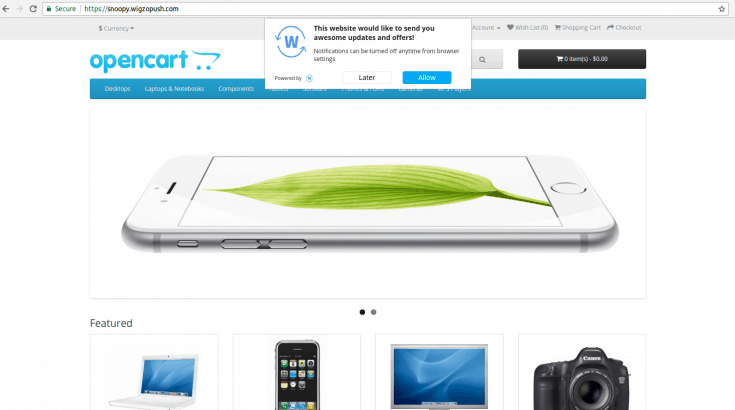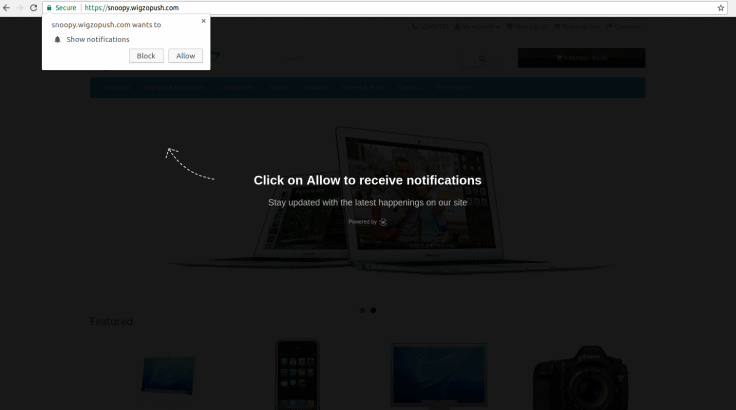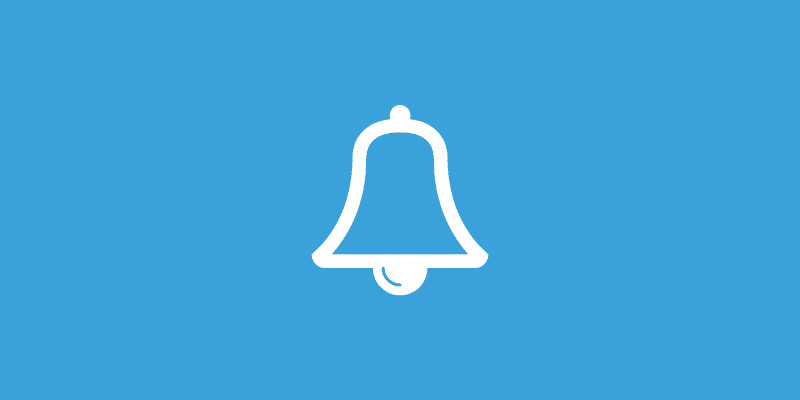Okay, so you’ve decided to use a web push notification campaign on your website to actively engage your website visitors once they leave. You have also created some of the smartest messages as well that are bound to draw their attention once read. But most of your visitors don’t really get to see your messages, because they don’t opt-in for them!
Bummer, right?
Even though web push notifications demand a smaller commitment from the website visitors – as compared to asking them to share their email addresses or phone numbers, there are still many internet users who fear being spammed by the business. They don’t see a reason behind having to opt in for push messages from the website, and that’s where you lose the opportunity to convert a lead or even engage your visitors.
Here’s taking a look at how you can increase your web push notification opt-in rates.

1. Offer a clear cut value proposition
Just like all other marketing aspects that require a consumer to share their contact information with a business, you need to state the value proposition for a visitor to opt-in for your push notifications.
Put it out in the open for them. Are they going to receive offers, discounts, alerts on your products or are they going to get messages pertaining to anything new about the business? Let them know and let them decide if they’d like to opt-in for them.
You’ll be surprised how much it pays off to let the customer decide for himself. But make sure what you offer to them as a value proposition, encourages them to engage with your business.
2. Create a two tap opt-in process
Yes, you heard that right. While opting for push notifications should be really simple, most web push notifications are opted in by mistake. An internet user visits a website, is presented by a dialog box at the top and in a hurry to remove it, a lot of them end up clicking ‘allow’.
This might seem like the ideal situation for your business, but it truly isn’t. Sending out push messages to these people is only to irritate them, make them look for ways to disconnect and then abandon your business altogether.
That’s exactly why we think a two tap opt-in process works perfectly. Firstly, ask for permission as soon as the visitor comes to your website. If the visitor does opt in, confirm the subscription before adding him to your list.

3. Add an Assistive Overlay
The native opt-ins does not have textual information on what the visitor is opting in for. This makes the website visitor skeptical about whether to hit ‘Allow’ or ‘Block’.
An assistive overlay helps the visitor to know what will they get if they ‘Allow’ notifications from the website. The user can communicate the benefits visitors can drive from opting-in to these notifications. An assistive overlay looks like the following:

The user can edit the text on the overlay notification with a relevant message addressing their audience. The text can be edited to carry information about what notifications would you send – will it be about the latest blog post, an ongoing sale or interesting offers that the visitor can avail.
4. Always make it contextual
The customer journey is a very important aspect when it comes to offering a great interaction experience. By analysing a customer or visitor’s journey with your business so far, you can identify the opportunities where a communication with them would help convert them or engage them better.
For instance, you’re running a sale on your electronic products. Even though you have the best of discounts to offer, there are still going to be those who seek lower prices. Based on what the visitor has shown interest in or browsed through, asking him to be notified of a price drop in the same makes him more likely to opt-in to the push notifications.
The higher your level of personalization, the greater will be your opt-in rate.
5. Maintain an omni-channel consistency
What most businesses don’t realise is that they set a certain expectation in a visitor by using different channels – be it social media, email, advertisements or even push notifications. Now if you’re conveying multiple value propositions or messages, you’re just overwhelming your target audience.
An overwhelmed audience, are just lost customers. This is where it becomes important for marketers to ensure an omni-channel consistency in messaging.
Your web push notification campaign should complement the other marketing efforts you’re running on different digital channels. While your audience should not be targeted with the exact same message every time, they still need to be consistent with one another and conveying the same value proposition.
Also read: Are browser notifications an email marketing alternative?
6. Don’t send out the same message to everyone
Let’s face it, my love for pink coloured products doesn’t mean even you would love to get notifications on them. You might hate pink or maybe a customer who loves monotones like black only. In this case, getting pink product messages is only going to feel like a spam to you – irritating messages that you just want to stop receiving.
This is why it is important to segment your push opt-ins too. They are different people, coming from different sources, looking for different products, then why send out the same message to them all?
Wigzo makes smart segmentation of your opt-ins possible, based on where the visitors have come from and what they have shown interest in first. This makes it possible for marketers to create highly personalized push campaigns (as in point no. 3) and get more people to opt-in as well as click through them.
7. Give it some personality
Imagine a dialog box hovering over this post in its standard white box format. The design of the website and the blog appeals to you, but that web push box just seems too out of place. This is going to make you want to get rid of it right away by clicking on ‘block’ mostly.
Ugly to see, out of sight as quickly!
Hence, it is important that you add some personality to your web push notifications. While the standard format might remain the same, adding your logo or a few icons that visitors associate with your business and an interesting copy, can work wonders for your opt-in and click through rates.
8. Maintain a modest frequency
Just like emails, your business needs to maintain a modest frequency of web push notifications. You overdo it and you’re more likely to be marked spam or unsubscribed from. Use web push notifications wisely.
Making them trigger, action or interaction based is the tactic that is going to up your engagement rates and keep your churn rates low. While there is no set number of notifications that you should be sending, it is important to A/B test the frequency on different segments to understand what your audience responds to or is okay with.
Also read: 10 browser notification metrics your marketer needs to measure
9. Make it easy to opt-out
Yes, this isn’t what your business wants but it only betters the customer experience you’re offering. The choice to opt-in and opt-out of interactions made by your business, should entirely lie with the customers.
Be it on mobile or the desktop, always make sure the subscriber is given the choice to easily unsubscribe from them. You could create a two tap process for the same, wherein you could reinforce the value of your messages to save the churn.
Also read: The complete guide to using mobile and web push notifications
Web push notifications are a powerful tool when backed by data and powered by Wigzo. Be it an eCommerce business, a blog or any B2B/B2C website, they are that one channel of communication you should be tapping into the power of.














